One morning our mini reunion in Las Vegas managed to get outside the city to see the Mojave Desert of southwestern Nevada. Red Rock Canyon National Conservation Area (Red Rock Canyon) is a 20-minute drive from the Las Vegas Strip.

It is an understatement to say that the difference between the Strip and Red Rock Canyon is like night and day. If we hadn’t just taken the short drive from the city, I never would have believed that the Las Vegas Valley with a population of over 2.25 million was just over the hill.
We arrived at the entrance just before our scheduled arrival time at 11:00. We allotted time for a tour of the one-way loop road and a couple of stops but not the numerous trails that entice visitors to get off the road and into the surrounding terrain.

The first stop was the Visitor’s Center. It has indoor and outdoor exhibits explaining the area’s history, geology, and endemic animal and plant life.
The Visitor’s Center keeps a low profile against the desert backdrop.
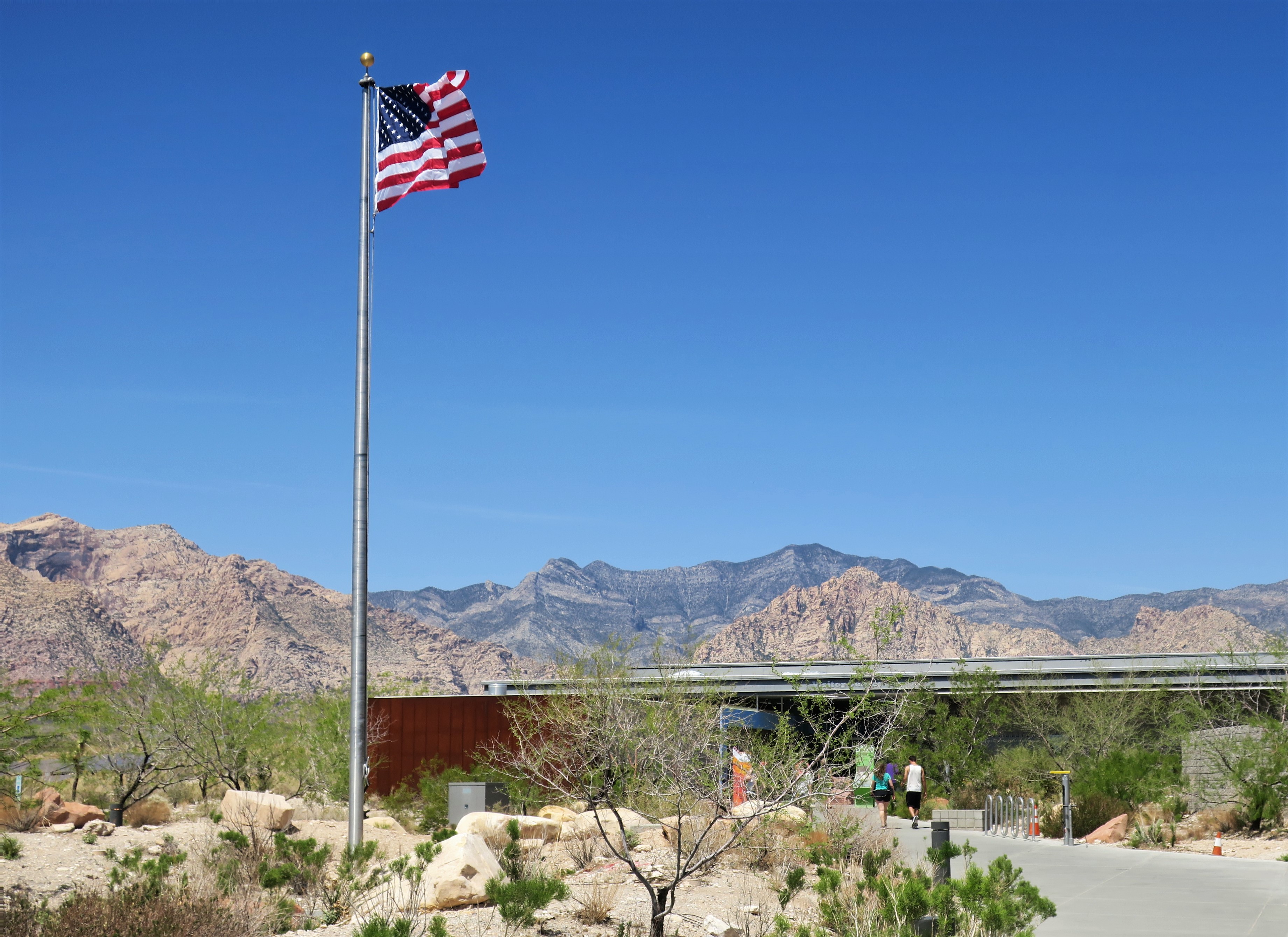


The center has a great view of Calico Hills, which was one of two places where we dismounted for up close views.


The Calico Hills area has two parking lots. Visitors can get out and walk up to the cliffs or take trails that go into the interior.

Trails from this location pass several tinajas, depressions in the rock that hold water from desert rain. Tinajas can hold water for months and are crucial for survival of many species.

A friendly visitor offered to take a group photo.
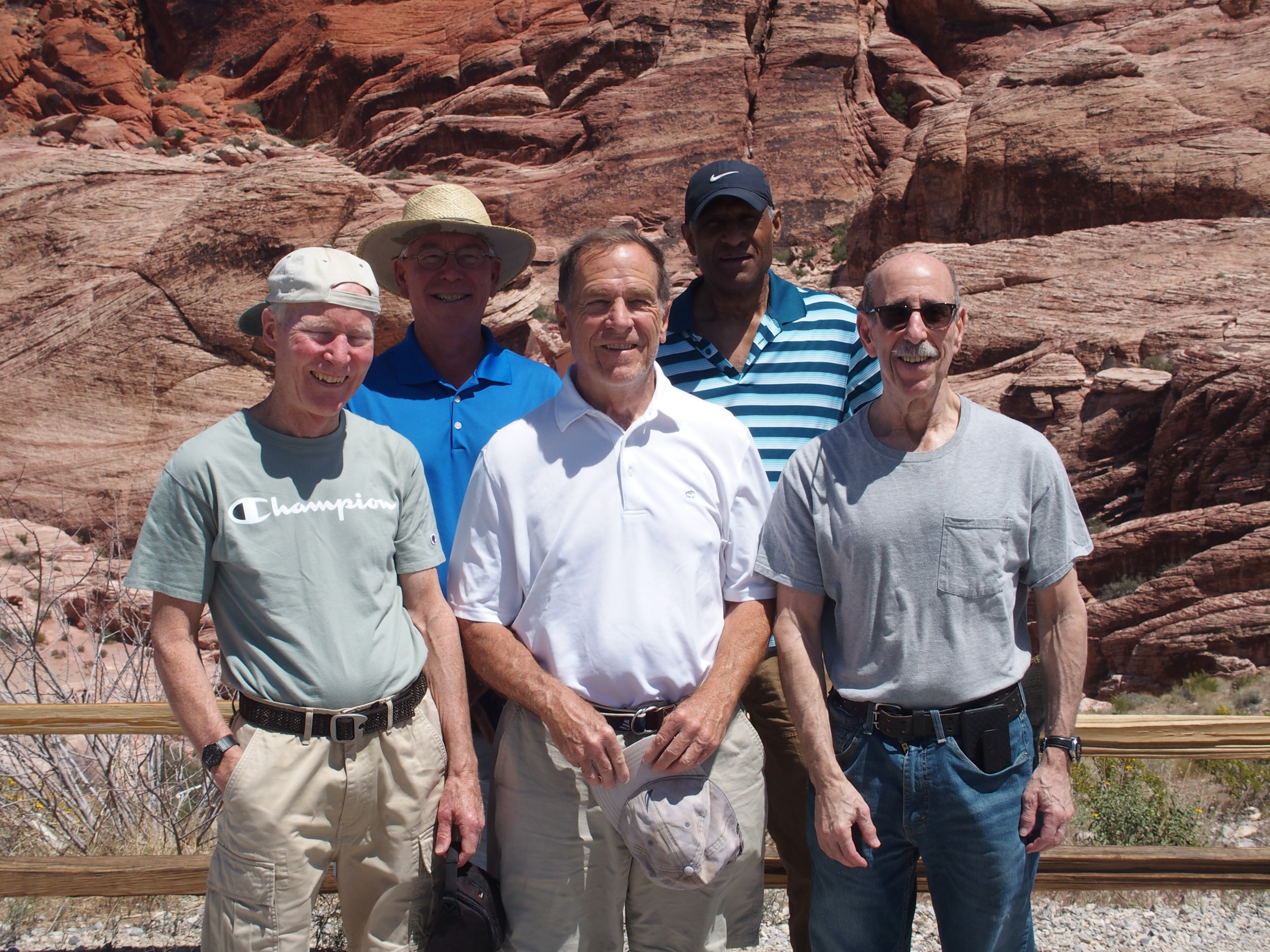
Current residences for this crew are, respectively, San Diego, CA; Fort Worth, TX; New York, NY; Scottsdale, AZ; and Charlotte, NC.
Calico Hills is one of many places in Red Rock Canyon that is popular with rock climbers. They say there are routes for all abilities. I think my ability, or lack thereof, is an exception to that general rule.


Red Rock Canyon is the product of several geological processes over eons. The process that seems to have the most influence over the area’s current appearance began about 180 million years ago when giant sand dunes were converted into sandstone.
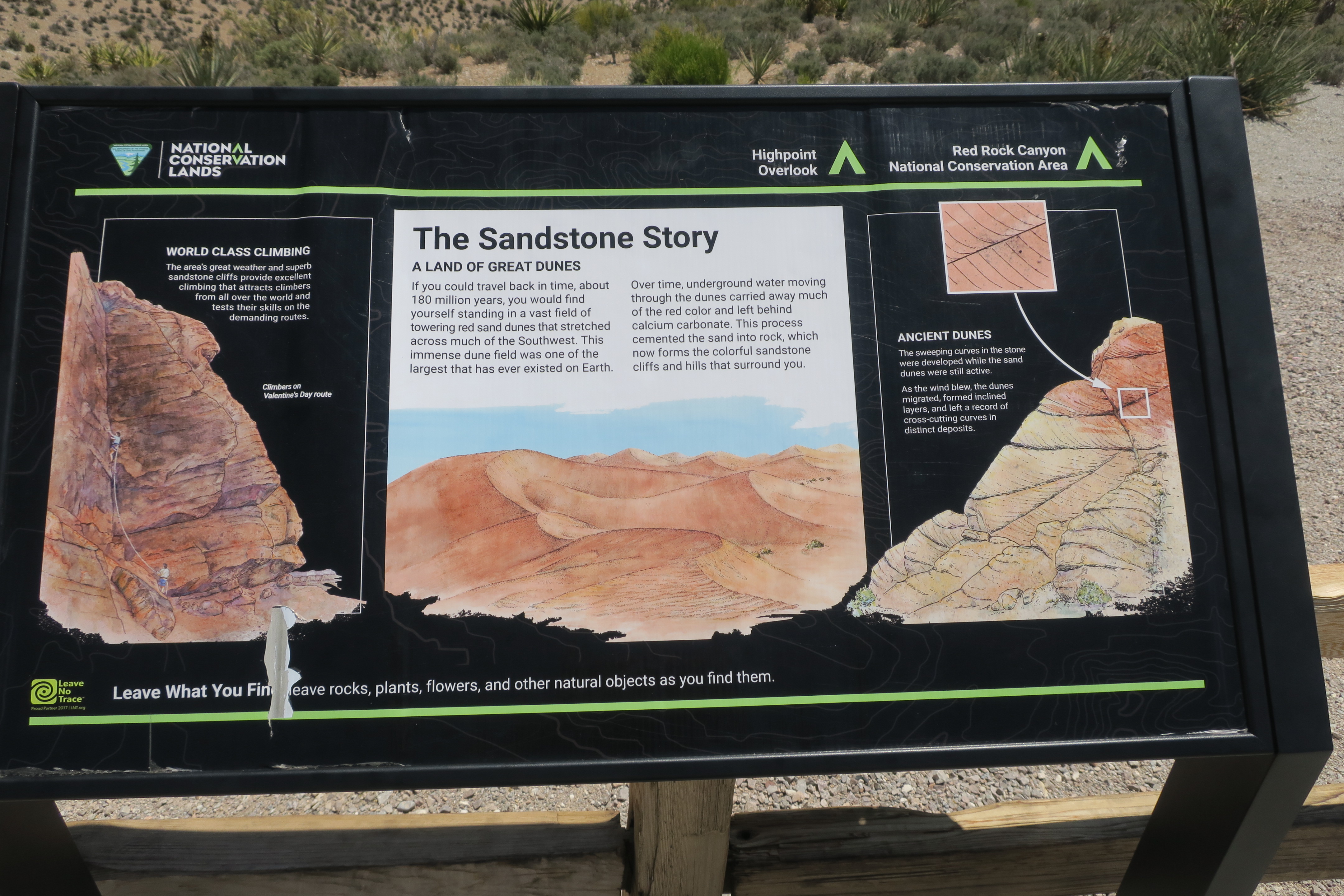
The loop drive offers plenty of stunning scenery without having to leave your car.


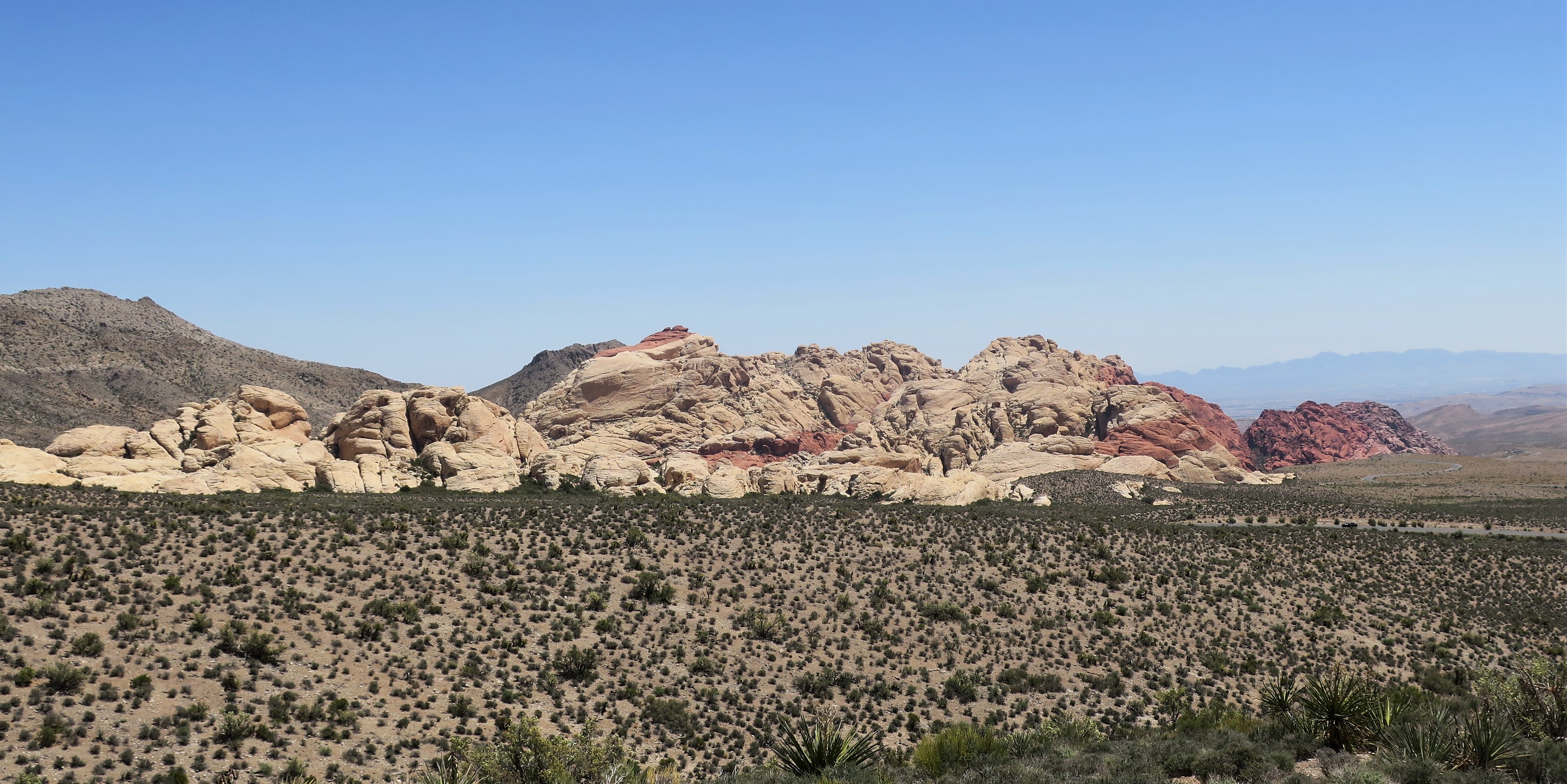
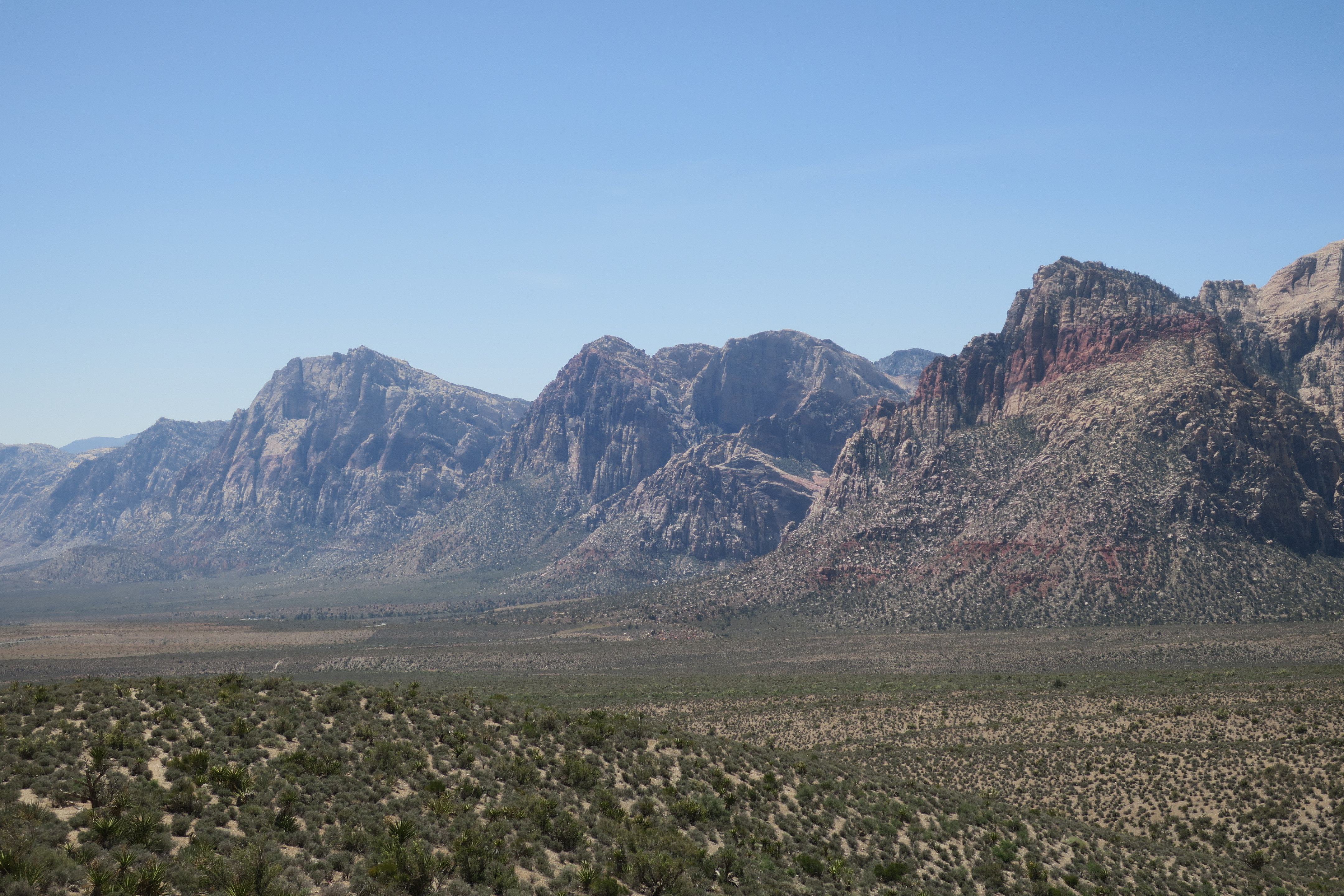
We also stopped to see the Petroglyph Wall. It is accessible from the Willow Spring turn off about halfway around the loop drive. A short trail leads across a dry wash to an area were people carved messages and artwork hundreds, if not thousands, of years ago.


The trail keeps some distance from the petroglyphs which are partially hidden by vegetation.


Willow Spring is the trailhead for a couple of trails that begged to be taken. Reading posts about great hikes on blogs I follow, I’m a little ashamed that we didn’t make time for a hike.


Walking to the petroglyphs provided a limited opportunity for close-up glimpses of Mojave Desert landscapes, flora and fauna.






Red Rock Canyon Hours & Entrance Fee
Red Rock Canyon’s hours vary by season:
- November-February: 6 am to 5 pm
- March: 6 am to 7 pm
- April-September: 6 am to 8 pm
- October: 6 am to 7 pm
The Red Rock Canyon Visitor Center is open daily from 9 am to 4:30 pm.
There are sections of Red Rock Canyon that you can get to without paying a fee. However, to reach the Visitors Center and/or drive the Scenic Drive, there is an entrance fee of $15 per car and $5/day per bike. . But, if you have a federal Annual Parks Pass, Senior Pass, or Access Pass, your entrance fee is covered. Reservations are required to access the Scenic Drive. You can purchase a timed entry ticket online up to 30 days before your visit.
Final Thought
Red Rock Canyon represents the Mojave Desert environment that completely surrounds Las Vegas and isolates it from other population centers. The middle of this environment seems like a highly unusual place to find a metropolis that attracts people from around the globe to its luxury hotels and casinos, elegant shops, fine restaurants, and world-class entertainment, and nightlife.

what incredible epic landscape! I had no idea this was so close to Las Vegas!
LikeLiked by 1 person
This is what Vegas would look like without Vegas.
LikeLike
Great photos of the various rock formations there, John! It’s a place I’ve always wanted to visit.
LikeLiked by 1 person
If you are in Vegas, please check it out. RRC is stunning. Have a great weekend!
LikeLiked by 1 person
My cousin lived in Las Vegas years ago. Not one for casinos, I was delighted to find this canyon. Enjoyed your photos.
LikeLiked by 1 person
The desert is one of my favorite places. I don’t get to see one very often.
LikeLiked by 1 person
The red rock landscape looks beautiful. And hot. It’s quite the contrast from the city.
LikeLiked by 1 person
Las Vegas is in the middle of beautiful and desolate territory. The Grand Canyon is only about 100 miles distant.
LikeLiked by 1 person
Thanks for the gorgeous tour! I didn’t make it here on my trip to Vegas.
LikeLiked by 1 person
I think you’d enjoy trying some of the trails at Red Rock Canyon.
LikeLike
Thank you for taking us on a virtual tour. The pictures are stunning and the scenery is just breathtaking. My first thought when I saw Calico Hills was of Petra.
LikeLiked by 1 person
Red Rock Canyon must be special if it evokes thoughts of Petra. I should spend some time in the Middle East. Petra is at the top of the list of places to see if I get there.
LikeLiked by 1 person
Petra is totally worth it. I highly recommend it. Over the years, the town surrounding Petra and Petra itself have evolved, making them more accessible and more comfortable for travelers.
LikeLiked by 1 person
Wow thanks for the walking tour and history John. Sooo beautiful and a nice contrast from the strip! I feel like I could count that as part of my steps today… 😂😂😂a def place to put on my hiking boots when I finally brave Vegas again-:)💕🌺
LikeLiked by 1 person
I hope you get to hike here Cindy. I’d love to read your poetic interpretation of the place. 😄
LikeLiked by 1 person
Thanks John!
Well, you just tossed a carrot so there’s that! If you read poetry, I will hike as I know that’s not your go too usually. 😘😎
LikeLiked by 1 person
I read your poetry.😄 Seriously. You express yourself in ways I can only admire. I hope your weekend has been fantastic!
LikeLike
We have been to Las Vegas many times, but we haven’t ever visited Red Rock Canyon. We will visit this beautiful place next time for sure. It looks like a wonderful place to hike. Thank you for sharing your post and wonderful photos!
LikeLiked by 1 person
Most trials are easy to moderate and I don’t think there is a bad time of year to go. A hike may be the perfect way to experience Red Rock Canyon. I’d like to try one myself if I get back.
LikeLike
I am stunned by those red rocks – its huge and beautiful. I am always amazed to see plants (and even colourful flowers) in a desert – thanks for sharing those photo’s. And oh, nice pic of the gang 😉.
LikeLiked by 1 person
I only regret we didn’t make time for a hike or two. That’s a mistake you would never make.😊
LikeLiked by 1 person
Well, you at least made an effort 😁 … and didn’t just stay in Las Vegas … that must count for something!
LikeLiked by 1 person
Next time. And on this trip, energy was more of an issue than time.
LikeLiked by 1 person
We enjoyed our visit here when the kids were young (around 1999). It was a nice break from the chaos that is Vegas. Thanks for the memories John. Allan
LikeLiked by 1 person
RRC is a great place to build memories with family and friends.
LikeLiked by 1 person
There is more vegetation than I would have anticipated. I love the cacti.
LikeLiked by 1 person
This visit was in April just after the wettest three-month period. RRC averages an inch of rain per month.
LikeLiked by 1 person
What a great place to be. Looks like they have some nicely marked out trails there.
▪◾◼◾▪▫◽◻◽▫▪◾◼◾▪▫◽◻◽▫▪◾◼◾▪
▫◽◻◽▫▪◾◼◾▪▫◽◻◽▫▪◾◼◾▪▫◽◻◽▫
LikeLiked by 1 person
The trails are very inviting. Next time, I need to try one or two.
LikeLiked by 1 person
Wonderful place and photos! Thank’s for share, John.
LikeLiked by 1 person
It is a pleasure to share the beauty of Red Rock Canyon. Thank you, Elvira, for your support in reading and commenting.
LikeLike